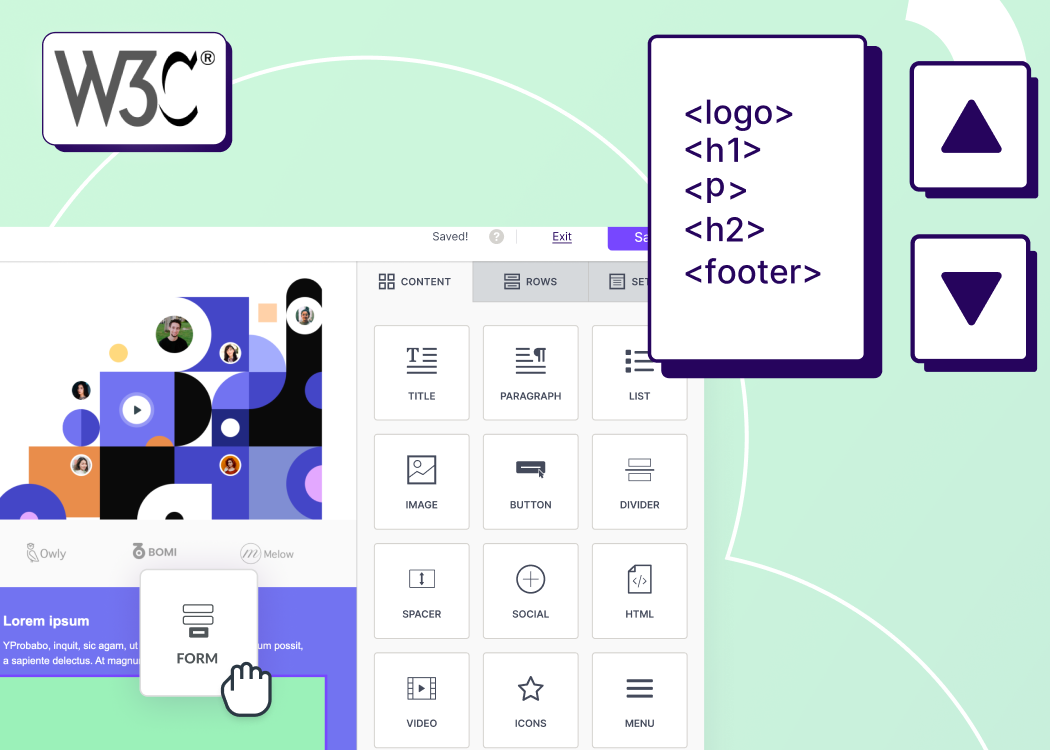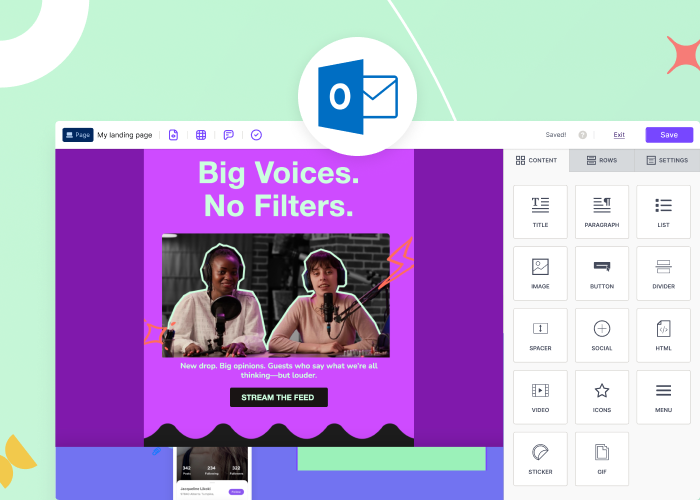Product recommendations are wildly used in the eCommerce space as a strategy to personalize content. The goal of a strong ecommerce product recommendation strategy is to deliver customers’ products that are dynamically populated based on their unique browsing behavior, attributes, or situational context, at the right time and place. This could be on a webpage, app, or email. These product recommendations then result in a personalized shopping experience that customers are more likely to purchase from.
Customers want shopping experiences that allow them to come across relevant products without endless searching and scrolling. Pareto’s 80/20 rule of marketing serves as the foundation for this business strategy. According to this rule, 20% of your products most likely drive 80% of your sales, and we can easily achieve that in BEE Plugin by creating personalized elements like “Product Bestsellers”, “ Product Trends”, “Frequently bought together” Items.
Here’s some data that further shows the impact and importance of product personalization:
- According to GetResponse, personalization in the email body has a 23.40% open rate and a 3.18% click-through rate.
- According to the Digital Marketing Skill Institute, emails with personalized recommendations increase click-through rates by 25–35%.
- According to Accenture research, 84% of consumers are interested in personalized products — and many are willing to pay more for them.
- According to Accenture, poor personalization and lack of trust cost US organizations $756 billion last year, as 41% of consumers switched companies.
Overall, it’s easy to see how in this polarized landscape, it’s crucial to understand the needs of your customers as it affects your bottom line.
Product recommendation teaches us that one size does not fit all.
Identifying the right recommendations is entirely dependent on product categories. For instance, advertisements for high-value products encourage customers to spend more time on your website and, therefore, more time in the consideration stage.
High-value products require more nurturing, and an understanding of their search intent. A great example of how to do this is by offering comparisons within a product range, as Apple does in the “Compare Mac Models” section of its website.
Other categories, such as food and groceries, benefit from a different approach to recommendations. Shoppers are more likely to use their shopping cart as a collection basket and check out once their collection process is complete. Some ideas for these categories might include recently viewed cart items, and complementary products.
Thanks to BEE Plugin’s versatility, customization options, and ability to shape the UX to suit your audience’s needs — users could design a personalized experience relevant to their target market.
The latest update to Custom AddOn, allows for further personalization, and the leveraging of merge tags and special links by allowing users to customize based on their campaigns.
Some examples of ways to personalize involve creating elements like:
- Product Bestsellers
- Trends
- Discounts and sales
- Rating Based Recommendations
- “Frequently bought together” Items
- “Abandoned Cart” Items
- User Testimonials
- Product Reviews
- Events
Thanks to the flexibility of the Custom AddOns, you can tailor the experience to suit the needs of your target audience.
Be an asset to your customers.
With the latest updates of Custom AddOn on BEE Plugin Superpowers you can personalize your users’ experience even further by leveraging merge tags, and special links.
Your journey starts with developers.beefree.io.
After you log in and create a development app under the Superpowers Plan, go to details > Application Configuration > AddOns > View More > Create a custom AddOn.

A pop-up will open to set up your first addon. Before the updates, you were only allowed two AddOn types:
- Image
- HTML
Previously, the HTML AddOn didn’t allow for control over individual elements coded into it.
We now offer two new exciting AddOn types: Mixed Content, and Row. The Mixed Content AddOn type will allow you to provide your users with advanced items like product recommendations, user testimonials, or event cards using the Content Dialog method. Please take a look at our documentation to see how it works.
The Row AddOn Type will allow the creation of custom rows to enhance your users’ designs even more. To learn more about Content AddOn Row read our documentation.
The advantage of this specific AddOn type is that all the elements included can be edited individually, providing more flexibility in the design process.
Quick links list:
- Custom AddOns overview https://docs.beefree.io/custom-addons/
- AddOns Development https://docs.beefree.io/addon-development/
- Content Dialog Method https://docs.beefree.io/addon-development/#the-content-dialog-method
- Content Dialog, how it works: https://docs.beefree.io/content-dialog/#how-it-works
Content Dialog: the key to enhancing your users’ experience

You can use Content Dialog to create user interfaces for your users to locate and insert images, links, paragraphs, buttons, icons, and more. It allows you to create an interactive layer between the editor and your application, allowing your users to find/build/insert specific content. The advantage is that you have complete control over the user interface.
Why this is relevant to your business? We have an answer: to be competitive and give your users a chance to shine and easily display high-value custom content in their digital campaigns.
Custom AddOns will shorten the gap between your users’ campaigns and the level of personalization they deserve.
Quick link list:
- Content dialog https://docs.beefree.io/content-dialog/
Mixed Content & Row AddOn Type at a glance
The Mixed Content AddOn Type includes several elements, depending on the level of development and complexity you want to achieve in the Content Dialog embedded in your Application.
With the Mixed Content AddOn Type, it is possible to inject different individual elements (e.g., images, titles, paragraphs, icons, buttons) that are editable and create an array of draggable items as a single draggable item. Combinations are endless, but the most common ones are the ones portrayed below:
Icon + Image + title + short paragraph + button.
We have also added the opportunity to inject an entire row to facilitate your users creation process.

Content Defaults are applied automatically to the elements dragged in the content area. Your users can still edit the individual items from the sidebar. If you want to learn more about Content Defaults and brand protection in BEE take a look at our previous blog post on brand protection while using BEE Plugin.
Customization bridges Plugin and other eCommerce brands. In this case, your users can retrieve products from an online store or display the products left in an abandoned cart. This feature guarantees complete flexibility to achieve your target market potential with some development effort.
Quick link list:
Content defaults https://docs.beefree.io/content-defaults/
What are you waiting for? Get started today!
Provide your users with a more efficient way of working and give them more time to spend on what matters the most to them. Contact us today to learn how BEE Plugin can help your business.






.webp)